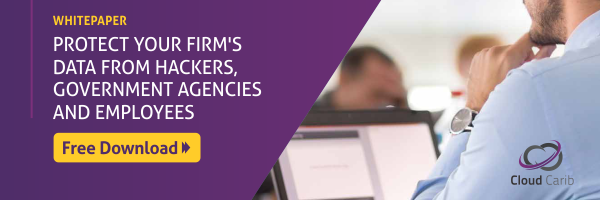
If knowing is half the battle, then knowing and understanding disaster recovery terminology can do wonders for helping organizations prepare for a potential incident. We’ve put together a list of key terms that will help you prepare your disaster recovery plan and ensure your business is ready to handle any situation that may arise.
1. Secondary Site aka Disaster Recovery Site
This is a facility where an organization can recover and restore its operations and IT infrastructure when its primary site has gone down. There are 3 types of secondary sites:
- Hot: A hot site is a fully functioning data center with hardware and software and all your data. This site is basically a virtual copy of your primary site. It can be fully operational at a moment's notice if the primary site goes down, this transfer is seamless and unnoticeable to users.
- Warm: A warm site is also a virtual replication of your primary site, except it is not active. If your primary site goes down you will have to manually configure this secondary site before it can restore business operations can be resumed. This typically requires a manual failover to be performed (vs. A hot site automatically failing over) and reconfiguring items such as DNS.
- Cold: Hardware and software on-site but they're turned off. To get this site up and running extensive work would need to be done to migrate and configure the necessary servers and equipment. This may require updating software items (depending on the length of time between last software synchronization), as well as the items that are described in the "warm" scenario above (DNS, manual failover, configuring networks, etc.)
2. Recovery Time Objective (RTO)
One can think about RTO as how long your organization can afford to take to fully recover and be operational again. For some organizations zero downtime is the only option, others may be able to accommodate a day or two of downtime without significant impacts. This recovery time objective will influence what type of disaster recovery site you choose and how you design your disaster recovery plan.
3. Recovery Point Objective (RPO)
The RPO is basically how much information an organization can afford to lose. Many organizations complete nightly backups. If your systems go down prior to this nightly backup all information since the last backup is lost. An organization must know their RPO to ensure they choose the disaster recovery options that best meet their data needs.
4. Disaster Recovery as a Service (DRaaS)
DRaaS is the hosting or replication of data to a third party in case of a disaster. This information can then be employed in the event of a disaster to minimize your downtime and improve your RTO and RPO numbers. DRaaS is beneficial to an organization as it saves them the costs associated with running their own disaster recovery site.
5. Redundancy
Protecting against data loss or system failure by utilizing multiple devices, connections, and networks to eliminate single points of failure. 